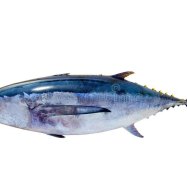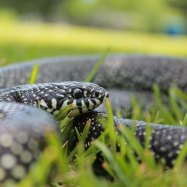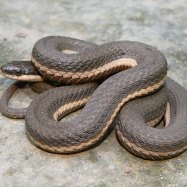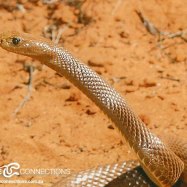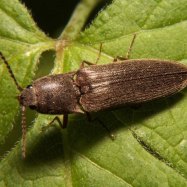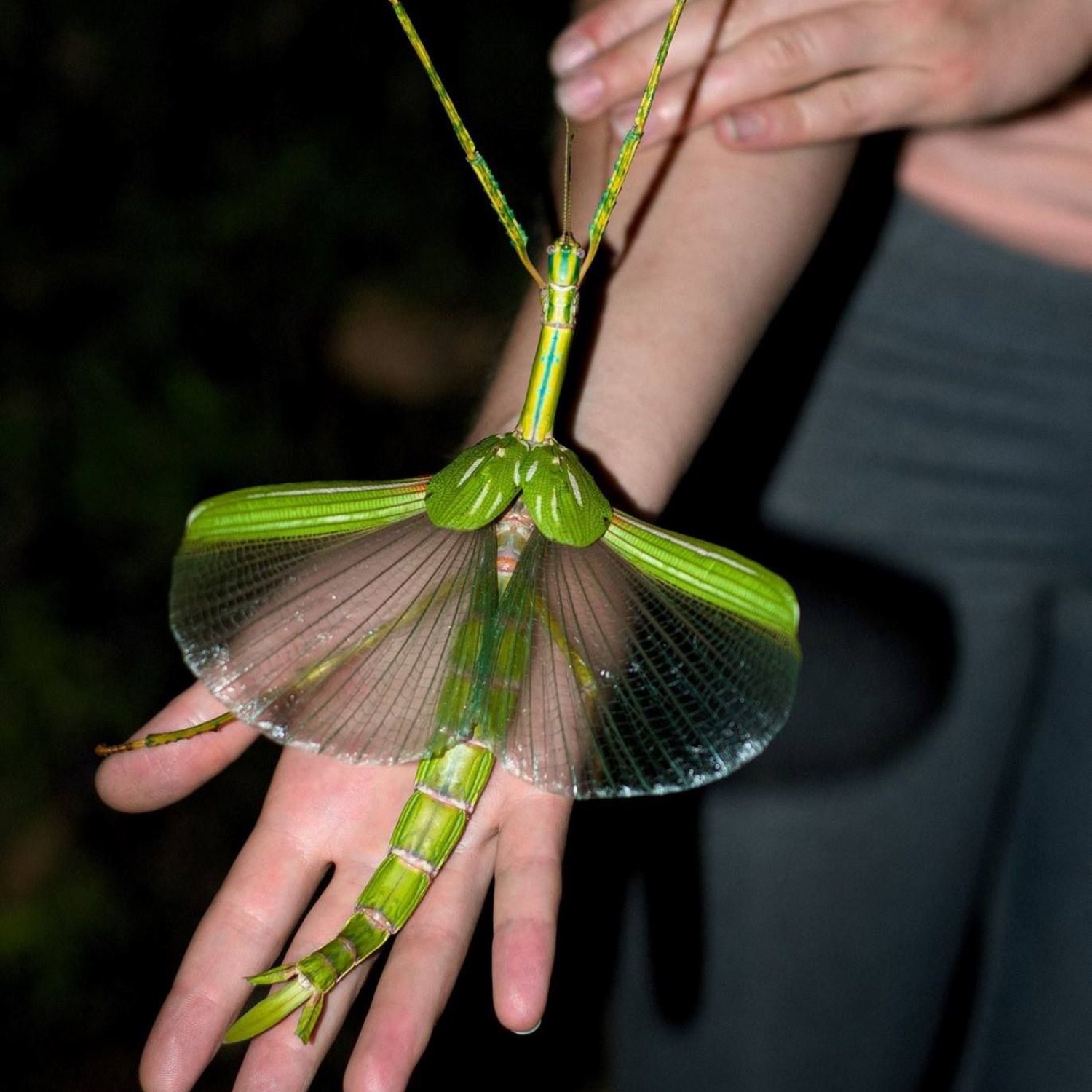
Stick Insect
2 to 12 inches
The Stick Insect, also known as Walking Stick, is a fascinating creature that can grow up to 12 inches in length. These insects are commonly found on trees, bushes, and plants, blending in with their surroundings. Their long and slender body, resembling a stick or twig, helps them camouflage from predators. They belong to the family Phasmatidae and are popular among insect enthusiasts for their unique appearance.
Animal Details Summary:
Common Name: Stick Insect
Kingdom: Animalia
Habitat: Tropical rainforests, temperate forests, and grasslands
The Mystifying Stick Insect: Masters of Disguise in the Insect World
Nature has a unique way of surprising us with its variety of fascinating creatures. From the depths of the ocean to the highest of mountains, every corner of the Earth is home to a diverse range of animals. However, one particular insect, known for its exceptional ability to blend into its surroundings, has captured the curiosity and awe of scientists and nature enthusiasts alike - the stick insect, scientifically known as Phasmatodea.Found worldwide, except in Antarctica, stick insects are commonly referred to as the "masters of disguise" in the insect world Stick Insect. Their unique and impressive camouflage technique has earned them their common name as they truly resemble a stick or twig, making it challenging to spot them in their natural habitat.
Taxonomy and Distribution
Stick insects belong to the animal kingdom, Animalia, and the phylum Arthropoda, which includes insects, spiders, and crustaceans. They are part of the class Insecta and the order Phasmatodea. While there are over 3,000 species of stick insects, the majority belong to the family Phasmatidae. They can be found in tropical rainforests, temperate forests, and grasslands, where they inhabit trees, bushes, and plants.These incredible creatures have a wide geographical distribution, with various species found in different countries worldwide. They are commonly found in countries such as Malaysia, Indonesia, Australia, and the United States, among others.
Physical Characteristics
One of the most striking features of the stick insect is its remarkable ability to mimic its environment. This is achieved through their body shape and coloration, making them almost invisible to predators Scotch Collie.The stick insect's body is long and slender, ranging from 2 to 12 inches in length, depending on the species. With its legs extended, it can look uncannily similar to a stick or twig, making it almost impossible to detect. They also have small, round heads with long, thin antennae, which help them navigate their surroundings.
Coloration and Camouflage
As mentioned earlier, one of the most impressive features of the stick insect is its exceptional camouflage abilities. They have various colorations, including shades of brown, green, and gray, which range depending on their habitat and species.Some species have developed coloration that matches the foliage of their surroundings, while others have evolved to mimic a specific type of stick or twig. For example, the Peruvian stick insect, a type of stick insect found in the rainforests of Peru, has coloration and texture that resembles sticks with moss, giving them a remarkable camouflage among the foliage.
Diet and Feeding Method
As herbivorous insects, stick insects primarily feed on leaves and vegetation found in their natural habitat. They have a specialized mouthpart that is adapted for chewing and consuming plant material.Their diet typically consists of a variety of leaves, such as eucalyptus, oak, ivy, rose, and bramble. However, some species have specific dietary preferences, and some have even evolved to feed on a particular type of plant, such as the Acacia plant.
Reproduction and Lifecycle
The stick insect's life cycle is fascinating, with some species exhibiting unique reproductive behaviors. For example, the female giant prickly stick insect, a species found in Australia, can reproduce without a male partner, a process known as parthenogenesis.After mating, the female stick insect will lay eggs, either by dropping them to the ground or attaching them to a plant with a glue-like substance produced by her body. The eggs resemble seeds and often stay dormant until the favorable time for hatching.
Once hatched, the young stick insects, called nymphs, resemble miniature versions of their adult counterparts. They will continue to molt and grow until they reach sexual maturity, which can take up to a year or more, depending on the species.
Adaptations and Defense Mechanisms
Apart from their remarkable camouflage abilities, stick insects have other incredible adaptations and defense mechanisms that help them survive in the wild.One of their most notable defenses is their unique ability to regenerate body parts. If a predator happens to attack them, they can simply shed their legs and regenerate them without any long-term effects. Furthermore, some species can release a foul-smelling liquid to deter predators from attacking or eating them.
The Stick Insect as a Pet
Due to their fascinating appearance and behavior, stick insects have become popular as pets among insect enthusiasts. They are relatively easy to care for and require minimal space, making them ideal for those living in small apartments.They thrive on a diet of fresh leaves, which can be easily found in most backyards or can be purchased from pet stores. Additionally, some species require specific temperatures and humidity levels, so it is essential to research the needs of your particular species before acquiring them as pets.
Importance in Nature
Apart from their unique and captivating features, stick insects play a significant role in their natural environments. As herbivores, they help maintain the balance of plant populations, and their presence can also benefit other organisms, such as birds and reptiles, which prey on them.Furthermore, stick insects also have a symbiotic relationship with bacteria that live in their guts and help them digest the tough plant material they consume. This relationship is crucial for their survival, as they rely on these bacteria to break down their food.
Threats and Conservation
While stick insects are thriving in their natural habitats, some species are at risk due to habitat loss and destruction. As their habitats are destroyed for human development and agriculture, their populations are declining, and some species have even become endangered.Conservation efforts are now being made to protect these incredible creatures and their habitats. Some zoos and conservation organizations are working to breed and release endangered species back into the wild, while others are promoting awareness and education to preserve their habitats.
The Fascinating World of Stick Insects
In conclusion, stick insects are truly a remarkable species, with their incredible adaptations and camouflage abilities. Their unique appearance and behavior have made them a fascinating subject for scientists and nature lovers alike.As we continue to discover and learn about these mystifying creatures, it is crucial to remember the importance of preserving their natural habitats and the role they play in our ecosystem. So the next time you spot a stick insect in your backyard, take a moment to appreciate their exceptional abilities and marvel at the wonders of nature.

Stick Insect
Animal Details Stick Insect - Scientific Name: Phasmatodea
- Category: Animals S
- Scientific Name: Phasmatodea
- Common Name: Stick Insect
- Kingdom: Animalia
- Phylum: Arthropoda
- Class: Insecta
- Order: Phasmatodea
- Family: Phasmatidae
- Habitat: Tropical rainforests, temperate forests, and grasslands
- Feeding Method: Herbivorous
- Geographical Distribution: Found worldwide, except Antarctica
- Country of Origin: Various countries
- Location: Trees, bushes, and plants
- Animal Coloration: Varies (brown, green, gray)
- Body Shape: Long and slender, resembling a stick or twig
- Length: 2 to 12 inches
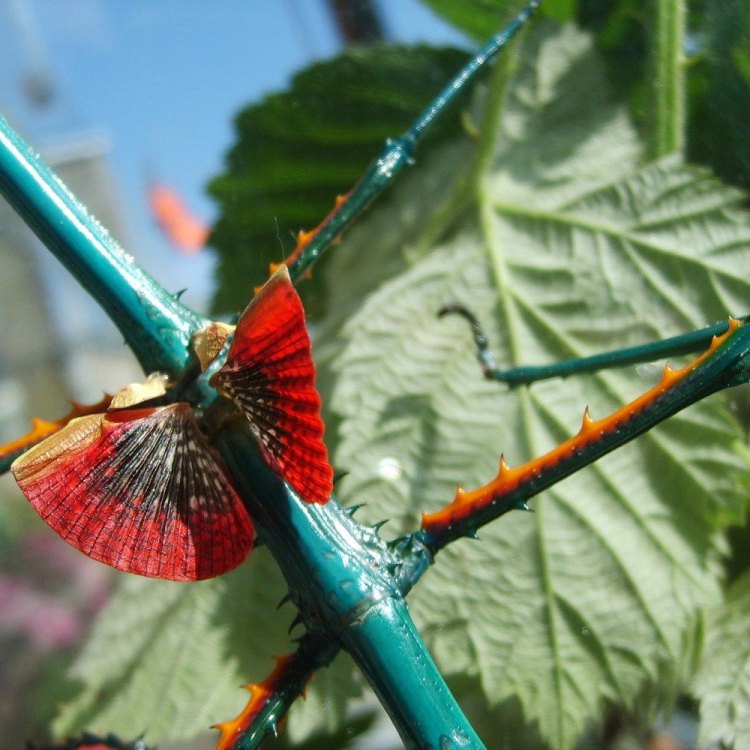
Stick Insect
- Adult Size: Depends on species, generally large
- Average Lifespan: 1 to 2 years
- Reproduction: Sexual
- Reproductive Behavior: Males use pheromones to attract females
- Sound or Call: Most species do not produce sounds
- Migration Pattern: Non-migratory
- Social Groups: Solitary, some species are communal
- Behavior: Some species are capable of regenerating lost body parts
- Threats: Habitat loss, predation
- Conservation Status: Varies depending on species
- Impact on Ecosystem: Important prey for birds and other predators
- Human Use: Pets, education, and research
- Distinctive Features: Camouflage, mimicry
- Interesting Facts: Some stick insects can change their color to match the surrounding environment
- Predator: Birds, reptiles, and mammals
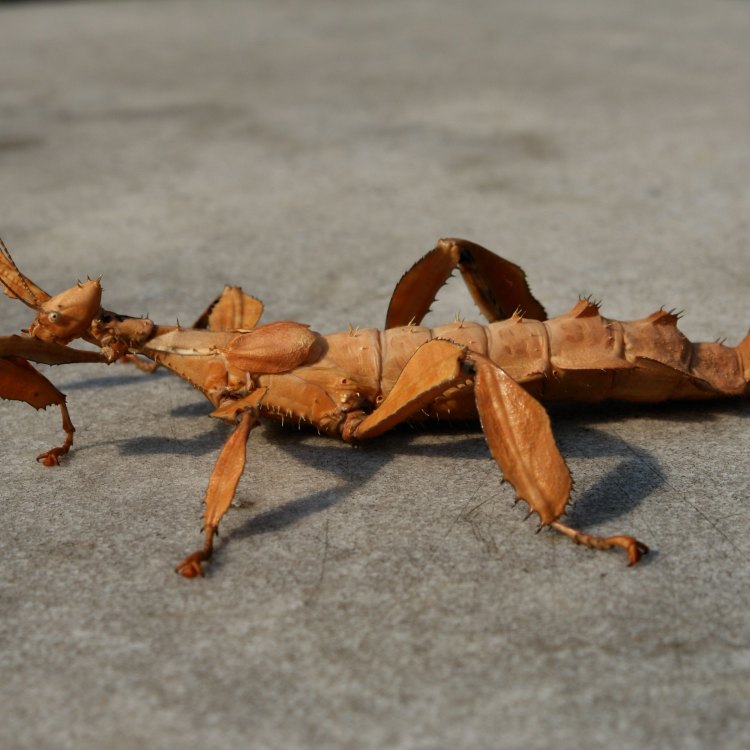
Phasmatodea
The Incredible World of Stick Insects
When we think of insects, we often imagine small, scurrying creatures that we try our best to avoid. But have you ever heard of stick insects? These fascinating creatures may not be your first thought when you think of insects, but they are just as interesting and important for our ecosystem. With their unique features and behaviors, stick insects are truly a marvel of nature.Size and Lifespan
Stick insects, also known as phasmids, come in a wide range of sizes depending on the species PeaceOfAnimals.Com. Generally, they are large insects, with some species reaching up to 13 inches in length. This makes them one of the largest insect species in the world. However, some species can also be as small as 0.2 inches, making them quite hard to spot in their natural habitat.In terms of lifespan, stick insects can live for 1 to 2 years. This may seem relatively short when compared to other animals, but for an insect, it is considered a long lifespan. Some species even have the ability to survive for up to 3 years in captivity.
Reproduction and Sexual Behavior
Stick insects reproduce sexually, meaning that they require a male and female to mate and produce offspring. Interestingly, male stick insects use pheromones to attract females Smooth Hammerhead Shark. These chemical signals are secreted by the males and are picked up by the females, leading them to their potential mates.Mating in stick insects is a complex process that involves the males using their hind legs to hold onto the back of the female's abdomen. They then pass their sperm into the female's reproductive tract. Once fertilized, female stick insects will lay eggs that will hatch into nymphs, tiny versions of the adult stick insect.
Sound and Migration Patterns
Most species of stick insects do not produce any sounds. They are generally silent creatures, relying on their camouflage to protect themselves instead of making sounds. However, there are some exceptions, such as the southern two-striped walking stick, which produces a loud noise by rubbing its hind legs against its wings.Stick insects are mainly non-migratory creatures, meaning they do not have any set migration patterns. Their movements are mostly limited to finding suitable plants to feed on and avoiding predators. However, some species have been known to disperse to nearby areas if their habitat becomes unsuitable.
Solitary vs Communal Social Groups
Stick insects are typically solitary creatures, meaning they live and hunt alone. However, there are some exceptions, such as the Indian stick insect, which is a communal species. These insects will live in groups and work together to find food and protect themselves from predators.In communal species, there is often a dominant male who will mate with most of the females, while other males are relegated to a subordinate role. This may seem unfair, but it is a common behavior in many insect species.
Behavior and Capabilities
One of the most fascinating features of stick insects is their ability to regenerate lost body parts. If a predator grabs onto their leg, they can intentionally detach that leg as a defense mechanism. The leg will then grow back in a matter of weeks, allowing the insect to continue its journey. Some species are also capable of regenerating other body parts such as their antennae.Stick insects are also masters of camouflage and mimicry. With their long, thin bodies and slow movements, they blend in seamlessly with their surroundings, resembling twigs or leaves. This helps them avoid detection by predators. Some stick insects can even change their color to match their environment, ensuring their survival in different habitats.
Threats and Conservation Status
Like many other species, stick insects face threats to their survival, with habitat loss being the most significant threat. As more and more land is developed for human use, stick insects lose their natural habitats, making it harder for them to survive.These insects are also often preyed upon by birds, reptiles, and mammals, making it a challenge for them to survive in their natural habitats. However, despite these threats, the conservation status of stick insects varies depending on the species. Some species are vulnerable, while others are considered to be of least concern.
Impact on Ecosystem and Human Use
Stick insects may not be the most well-known creatures, but they play a vital role in our ecosystem. They are an essential source of food for birds and other predators, helping to maintain a balanced food chain. Without stick insects, these predators may struggle to find food, leading to a domino effect on the entire ecosystem.Humans also have a role to play when it comes to stick insects. These creatures are often kept as pets, with their unique appearance and behaviors making them popular among insect enthusiasts. They are also used in education and research, providing valuable insights into the insect world.
Predators and Defense Mechanisms
As mentioned earlier, stick insects are often preyed upon by birds, reptiles, and mammals. These creatures have developed various defense mechanisms to protect themselves from predators. As mentioned earlier, some species can detach a body part and regenerate it later, while others rely on their camouflage and mimicry abilities to avoid detection.Some species also have spines or long and sharp leg spurs that they can use to defend themselves from predators. These spurs can inflict a lot of pain on predators, making them think twice before attacking a stick insect.
The Diverse World of Stick Insects
With over 3,000 known species, stick insects are truly a diverse and interesting group of insects. Each species has its unique features and behaviors, making them stand out in the vast insect world. From their regenerative abilities to their incredible camouflage skills, stick insects continue to amaze and fascinate both researchers and nature lovers alike.However, it is essential to remember that these creatures are also an essential part of our ecosystem. They may seem strange and unfamiliar, but like all living beings, they have a role to play in maintaining the balance of nature. So, the next time you come across a stick insect, take a moment to appreciate their unique beauty and importance in our world.
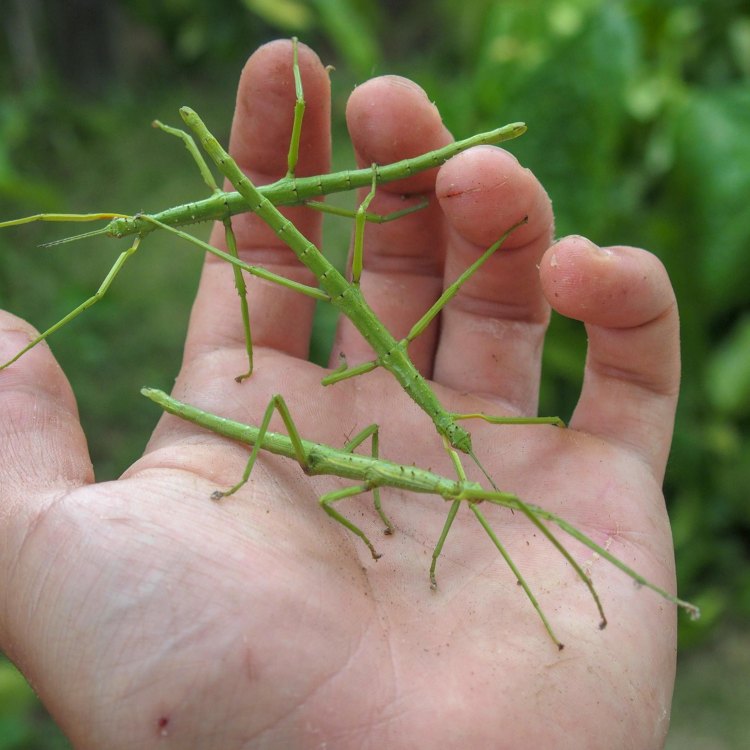
The Mystifying Stick Insect: Masters of Disguise in the Insect World
Disclaimer: The content provided is for informational purposes only. We cannot guarantee the accuracy of the information on this page 100%. All information provided here may change without prior notice.






